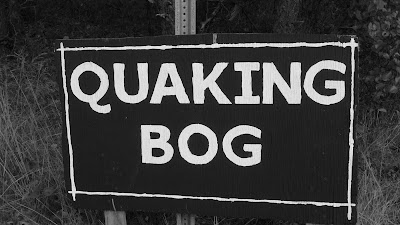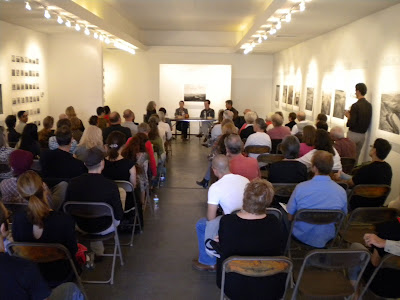A report from 516 Arts, Oct. 3, 2009:


Panel Discussion with Guggenheim Fellows
Michael P. Berman, Erika Blumenfeld and David Taylor
An event for LAND/ART in conjunction with Grasslands / Separating Species at 516 ARTS
and Early Findings: Artifacts from The Polar Project at Richard Levy Gallery
moderated by Mary Anne Redding
Questions:
William deBuys has written in his book The Walk: “A species of hope resides in the possibility of seeing one thing, one phenomenon or essence, so clearly and fully that the light of its understanding illuminates the rest of life. Almost any object of contemplation can be the vehicle for such discovery.” Talk about your long-term commitment to understanding place and the issues that emanate from a particular place through photography and how your photographs illuminate a life philosophy: Michael, the desert grasslands, David the US/Mexico border, and Erika, Antarctica.
Robert Adams writes in Beauty in Photography: “Landscape pictures offer three verities: geography, autobiography & metaphor. Geography is, if taken alone, sometimes boring, autobiography is frequently trivial, and metaphor can be dubious. But taken together the three kinds of information strengthen each other and reinforce what we all work to keep intact – an affection for life.” How do you weave these three truths, as defined by Adams, into your work?
Each of you photographs in relatively inaccessible locations and bring your images and installations back to public venues. What is it about inaccessibility and relative desolation that is significant to where and how you work?
Talk about how your work fits into the larger interpretations of the LAND/ART project of which these installations now on view at 516 & the Richard Levy Gallery are the culmination and explain how you see your artwork having an impact on the land environment and the human environment both now and in the future.
I wasn’t going to ask you about inspiration, but yesterday I was at a panel discussion where artists and designers were asked about who inspired them and I was surprised at the thoughtfulness and detail of their answers, so I decided I would ask each of you who inspires you. The answer can be anyone, other artists, poets, scientists, your partner...
Scale and ambiguity are obviously importance in your work, please talk about scale as it relates to your images, and this may be a good time to speak briefly about technique and equipment.
Panel comment from Robert Wilson
"
Curator Mary Anne Redding asked the panel how the photographic work in Grasslands / Separating Species fits into the Land Art movement and this LAND/ART project in particular, and artist Robert Wilson said, “What we may think of first when we think of Land Art is the earth works that have been created since the 1960s, work in which human beings "played around" with the land and the landscape for the purposes of art: that is, physical manifestations of the artist's response to the landscape.
But the work we see here at 516 ARTS exemplifies how landscape photographers, for a long time, have been similarly involved with the landscape by first noticing and then documenting what God and/or Nature and Man have done to it. Michael Berman's piece "Line", which shows a Chihuahuan landscape divided by a fence, overgrazed on one side and not so overgrazed on the other, epitomizes how some landscape photographers have been out in front of the Land Art movement for years, noticing and documenting the aesthetics of the Man-altered landscape. In this case, a simple straight-line fence, separating land under different kinds of environmental pressure, resulted in an aesthetically exquisite, all be it tragic, land alteration when seen through the photographer’s lens."
Comment from Panel Moderator, Mary Anne Redding:
"
It was fantastic that the audience stayed for an hour and a half and had such great comments and questions.... I loved what Michael said about being seduced by a landscape and how Erika thinks of herself as an "Eco-Archivist" I also liked her correlation ofgeography = bodyautobiography - mindmetaphor = soul"
Link to 3 videos from the panel from Darius D. Himes, Radius Books, Editor.
Photos from the opening of "Grasslands / Separating Species" for LAND/ART at 516 ARTS can be viewed at the following address:
Click the slideshow icon in the upper right to see them big. At the end are a few shots during the installation process and of the panel and a school tour. The exhibitions are on view through December 12.
Link to Blog for
flash flood's blog posting about the
Grasslands / Separating Species show.Adobe Airstream reviews the panel discussion here.









































